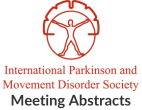Overlapping Pathogenetic Findings in Developmental Coordination Disorder (DCD), Ataxia, Dystonia and Myoclonus: is DCD part of a Movement Disorder Spectrum?
Objective: To explore the underlying pathogenetic mechanisms of Developmental Coordination Disorder (DCD) and compare these with findings in ataxia, dystonia and myoclonus. Background: DCD is…Frequency of SCA 2, 3 and 7 in Slovak patients with spinocerebellar ataxia – first report of SCA2 patient from Slovakia
Objective: The aim of this study is to investigate the frequency of spinocerebellar ataxia (SCA) 2, 3 and 7 among Slovak patients with cerebellar ataxia…A juvenile onset Sandhoff disease case caused by hemizygous mutations of HEXB
Objective: Sandhoff disease (SD) is a rare neurological disease with high clinical heterogeneity. SD in juvenile form is much rarer and it is often misdiagnosed…Late Onset Cerebellar Ataxia in a Patient with a Heterozygous Pathogenic KIF1A Mutation: A Case Report
Objective: Expand upon the current phenotypic understanding of those with KIF1A-associated neurological disorder (KAND), including late onset progressive cerebellar ataxia (CA). Background: KAND encompasses a group…Dystonia as presenting feature of Witteveen-kolk Syndrome
Objective: To describe the clinical heterogeneity and expand the phenotypic spectrum of Witteveen- Kolk syndrome Background: Witteveen-Kolk syndrome (WITKOS) is a neurodevelopmental condition, first described…Spinocerebellar ataxia type 28 presenting as spastic paraparesis
Objective: To describe a patient with spinocerebellar ataxia type 28 (SCA28) presenting with isolated spastic paraparesis. Background: Autosomal dominant (AD) mutations in the ATPase family…Targeted sequencing of regulatory regions shows potential SNVs affecting FXN gene expression in Friedreich’s ataxia patients
Objective: To investigate variations in regulatory regions of the FXN gene hampering its expression in Friedreich’s Ataxia (FRDA) patients. To investigate variations in regulatory regions…Novel CACNA1A splice site variant associated with cerebellar ataxia and mild cognitive impairment; case report of Czech family.
Objective: To describe a case of two related individuals with cerebellar ataxia with a novel variant in the calcium voltage-gated channel subunit alpha1-A (CACNA1A) gene.…Cerebellar ataxia in Hypomyelinating Leukodystrophies: A case series
Objective: We present a case series of cerebellar ataxia due to hypomyelinating leukodystrophies (HLDs). Background: HLDs are a group of disorders arising from primary deficit…Episodic ataxia type 2: a previously undescribed variant in the CACNA1A gene
Objective: To describe a previously unreported variant in the CACNA1A gene in a patient with episodic ataxia type 2 (EA2) phenotype. Background: EA2 is the…
- « Previous Page
- 1
- …
- 7
- 8
- 9
- 10
- 11
- …
- 28
- Next Page »
